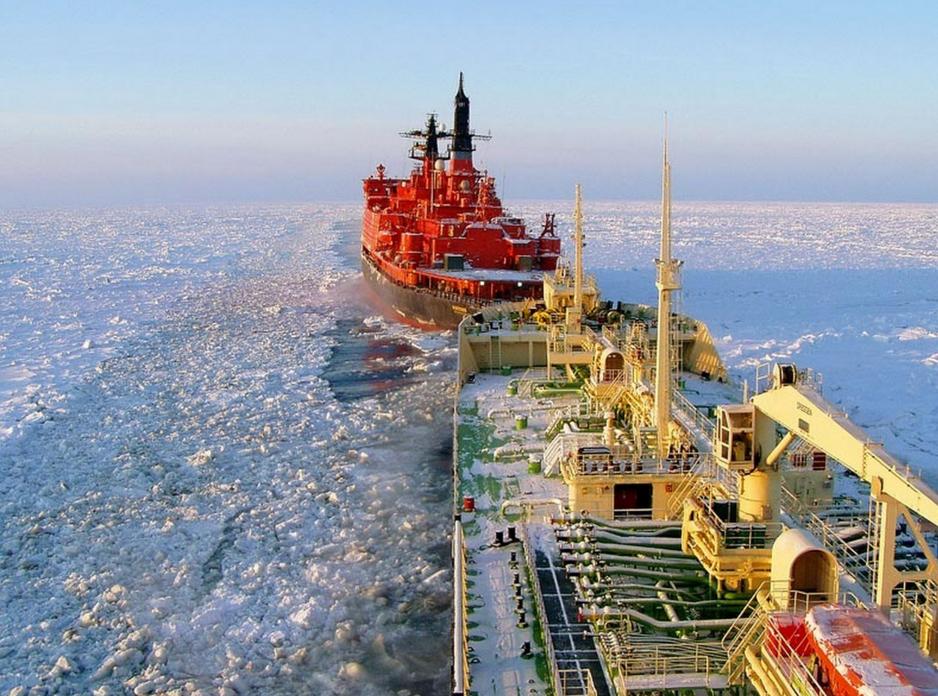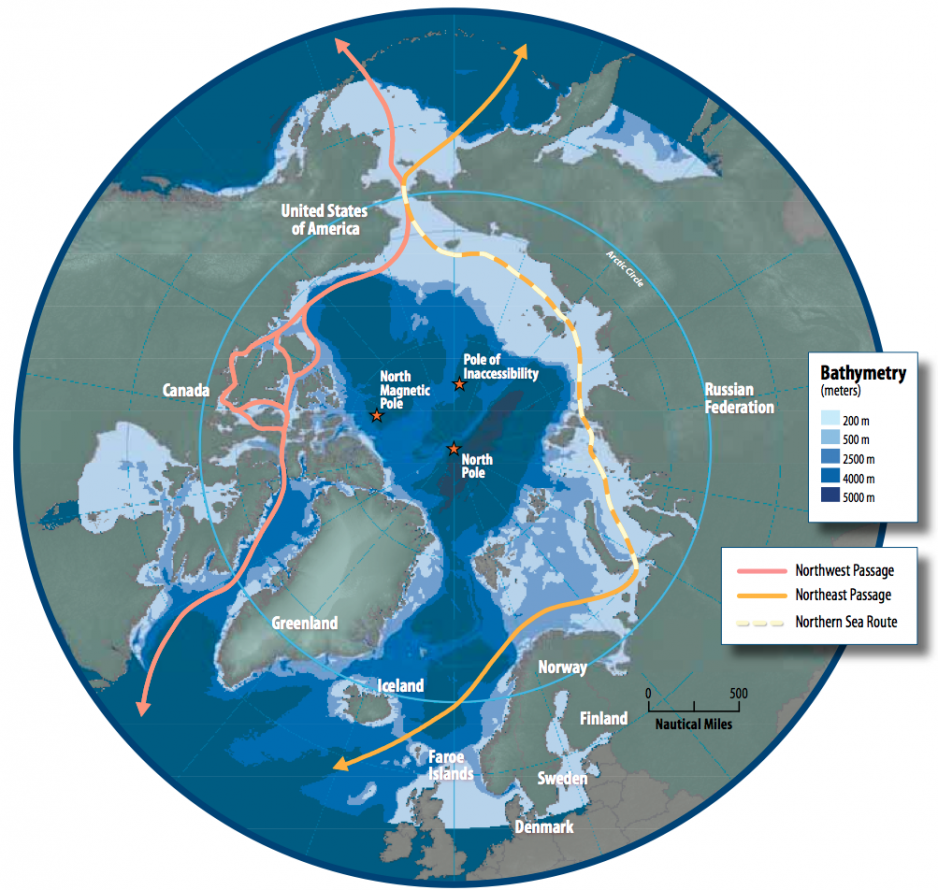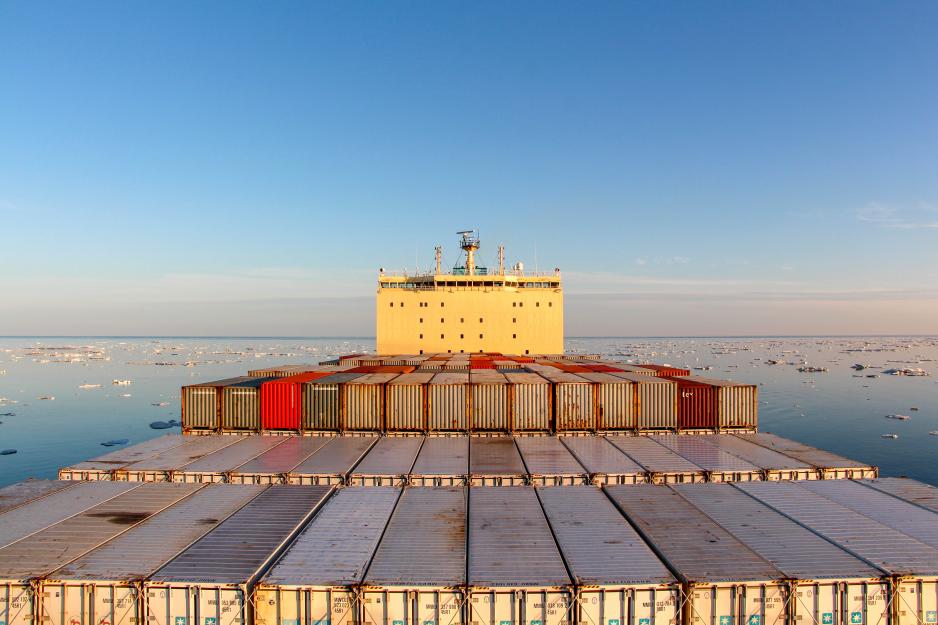Northern Sea Route Transit Traffic Remains Modest

In 2011, Russian President Vladimir Putin stated that “The Arctic is the shortcut between the largest markets of Europe and the Asia-Pacific region”. Ten years later, cargo-transit is very limited along the North-West Passage. (Photo: Rosatomflot)
As Arctic shipping activity is increasing, transit traffic on the Northern Sea Route has not taken off, contrary to past predictions.
Scientists, journalists, and others have written extensively about shipping and transit along the Northern Sea Route (NSR) for the past twenty years.
Many experts believed there would be an explosion in transit shipping along the NSR, with ships going through from the Atlantic to the Pacific, as the Arctic route is shorter.
“What is taking place, contrary to those expectations, is that Arctic traffic is indeed increasing. But it is not transit traffic. It is destination traffic”, says Arctic shipping expert, Frédéric Lasserre, Professor at the Department of Geography at Laval University in Quebec City.
“Traffic consists of ships going to the Arctic to perform an economic task. Whether it is fishing, tourism, or ships linked to natural resource extraction. As far as transit traffic is concerned, it is not taking off”, Lasserre continues.
Much of the so-called transit shipping along the route is traffic fuelled by ships going to or leaving Murmansk. Real transit from Europe to Asia is very limited.
Harald Solberg, the CEO of the Norwegian Shipowners' Association, says to High North News that they see limited activity from their members in the area.
“Transit sailing through the Northeast Passage is perhaps what has received the widest attention; however, destination transport (goods freight) and offshore oil and gas are what will be most relevant in the short and medium-term”, Solberg says.
In 2011, Russian President Vladimir Putin stated that “The Arctic is the shortcut between the largest markets of Europe and the Asia-Pacific region. It is an excellent opportunity to optimize costs."
However, ten years later, cargo-transit is very limited along the North-West Passage. This traffic did not soar, as many had predicted.
“There are several reasons for that. The main reason is that the route remains very seasonal. For regular transit traffic to develop, it must be much more regular in order for shipping companies to be interested in this kind of traffic”, Lasserre says.
The Arctic is the shortcut between the largest markets of Europe and the Asia-Pacific region
Just-in-time
In Lasserre's opinion, there are two main segments that could be interested in utilizing the Northern Sea Route. The first is liner-shipping, which consists of container ships. The other is tramp shipping, mostly consisting of bulk shipping.
“For these two segments, there are advantages and limitations when it comes to Arctic sea traffic. As far as container-shipping is concerned, it is based on Just-In-Time. They are working with timetables that are published maybe six or nine months ahead of the actual shipping”, Lasserre says and adds:
“It is very difficult for this kind of shipping companies to forecast at the beginning of January what the ice is going to look like in June or July. It is impossible to predict if the straits are going to be free or not. It would be very risky for the company's services to their customers when they are not sure whether the straits are free for passage.”
It is very difficult to forecast at the beginning of January what the ice is going to look like in June or July
Due to the constraints of Just-In-Time, it is not really interesting for most container-shipping-companies to go through the NSR. They prefer regular routes where they can load and unload in several ports. Whereas in the Arctic, there are no ports with large hinterlands that would be available for them to increase traffic.
“For bulk shipping working on a tramp ad hoc basis, it is very difficult to recoup the investment if the carrier is not sure it will be able to sail regularly in Arctic waters. Running a high ice-class vessel in warmer waters is a waste of money since these ships are more expensive to buy and to run. Shipping companies thus prefer security through long-term service contracts, which are hard to get because the market is still limited", Lasserre says and adds:
“For these reasons, there is not going to be an explosion of traffic on the NSR with containerships, for now. Bulk and container ships are still going to need icebreaker-capacities to navigate in the Arctic. Maybe in 20 years, it may be different but for now, such vessels are needed. They are expensive to buy and to operate.”
Structural constraints
What would have to change for traffic to increase?
“In the short term, these constraints are structural. They can't be changed. To exploit a niche market, a few companies are planning to either develop trans-shipment or have long-term contracts. This is what shipping companies working for the Yamal project are doing. They assign long-term contracts with Novatek and Gazprom, to make sure their investments are profitable in the long term future”, Lasserre, says and adds:
“Arctic shipping could be made profitable if shipping companies were interested, but that raises the question 'what kind of shipping company would perform in the Arctic segment'? But in the short term, most shipping companies are saying that for now, it is definitively not profitable, because of just-in-time constraints, and the need for very long-term contracts. I think transit shipping will develop in the future, but it is going to be a very niche market”, Lasserre says in closing.
Kjell Stokvik is Director of the Centre for High North Logistics (CHNL) in Kirkenes, Norway. He says that it is the cargo owners and the shipowners who will define the development of transits along the NSR.
"It is very difficult to predict the future development for transit traffic, as shipowners need to find cargo to fill the ships", Stokvik says.
Although the overall transit traffic remains modest, CHNL has recorded a small growth in cargo volume and transit traffic over the last five years, with 65 transits last year. This includes 25 international transits where Russian ports are not included.
It is very difficult to predict the future development for transit traffic, as shipowners need to find cargo to fill the ships
Harald Solberg, the CEO of the Norwegian Shipowners' Association says that the High North is a strategic region that they follow with interest.
According to him, there are in particular three areas of interest for the maritime industry in the North: offshore energy exploitation, destination shipping, and trans-polar sailing.
“In the longer term, one can envision further opportunities. Search and rescue, as well as the development of relevant infrastructure, will be vital for all development of the area. As an employer and interest organization for shipowners related to Norway, the Norwegian Shipowners' Association is concerned with responsible and sustainable development of business policies in this area. Good search and rescue (SAR) capacity, as well as extensive development of relevant infrastructure, will be important for a gradual increase of activity in the North-East Passage”, he says in closing.



